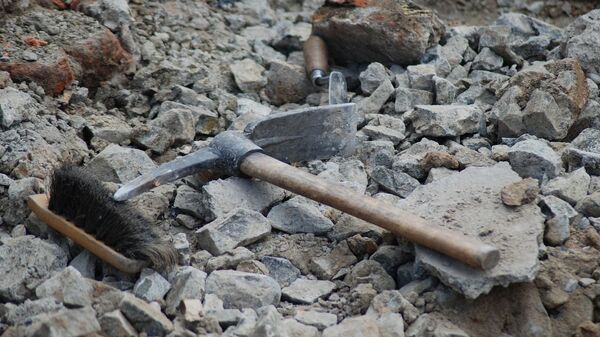According to the CTV News, the amateur paleontologist discovered the hadrosaur fossil in the Nature Conservancy of Canada’s Nodwell property at Horseshoe Canyon.
When Hrushkin first saw the fossils, he was “literally speechless,” he told the BBC.
"I wasn't even excited, even though I know I should have [been] … I was in so much shock that I had actually found a dinosaur discovery,” he added.
“I know that it’s more commonly known as the duck-billed dinosaur,” Hrushkin told CTV News. “They have the bills almost like ducks, and they’re herbivores, and they stand on two feet - that sort of thing.”
— NCC_CNC Media (@NCC_CNCMedia) October 15, 2020
— Carrie Duc-Vegso (@DucVegso) October 16, 2020
Hadrosaurs are members of the ornithischian family Hadrosauridae. This group of dinosaurs is best known for the flat, duck-bill appearance of the bones in their snouts.
When they got home, Nathan and his father contacted the Royal Tyrrell Museum of Palaeontology in Drumheller, Alberta, because fossils are protected by law. The museum asked them to send photos and GPS coordinates of their discovery.
Even though hadrosaurs are the most commonly found fossils in the Alberta badlands, this particular fossil is noteworthy because it’s a rare juvenile skeleton and was uncovered in a layer of rock where fossils are uncommon.
“This is very significant for the Nature Conservancy of Canada, because when we talk about land conservation we talk often about the benefit for future generations, but this is a really good opportunity to point out how conserving important landscapes also help us unearth mysteries of our planet’s history,” Carys Richards the communications manager with the Nature Conservancy of Canada, told CTV.
According to Francois Therrien, the curator of dinosaur paleontology at the Royal Tyrrell Museum, a full-grown hadrosaur would have measured 10 to 13 meters in length. The fossil discovered by Hrushkin only likely grew to 3 to 4 meters in length.
“So Nathan’s discovery is actually significant because it starts to fill in that gap. It's a fossil from that area and from that time interval that will actually give us information about what was happening with dinosaurs 69 million years ago,” Therrien explained.

